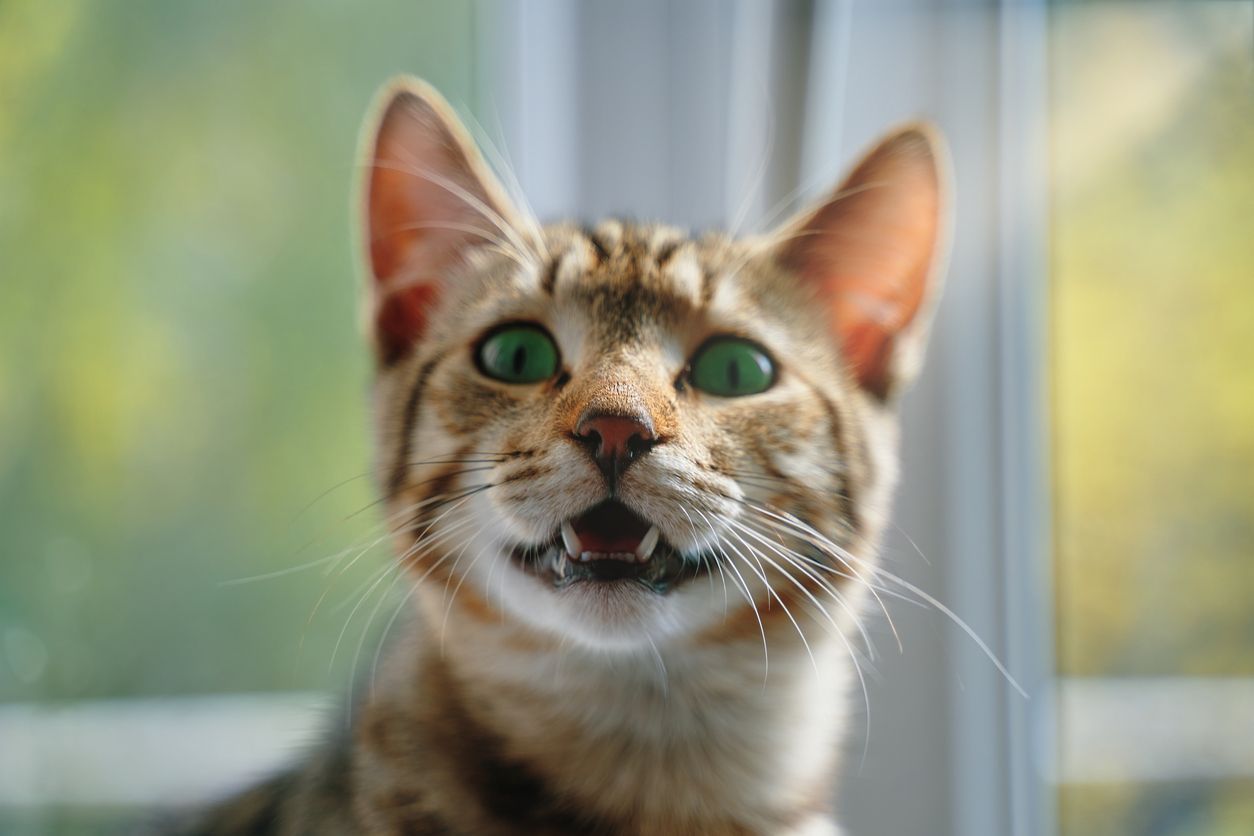What should I do if my cat has a broken tooth?

Disclaimer: This article and its content and related references does not constitute veterinary advice and should not be considered a substitute for veterinary care.
Fractured teeth commonly result when cats fight or are involved in an accident. The treatment for a cat’s broken tooth varies depending on the location and type of tooth fracture. If you are worried your cat has broken a tooth, read on to learn:
- How did my cat break a tooth?
- How are broken teeth in cats treated?
- How do I know if my cat broke a tooth?
- Can I help protect my cat from breaking teeth?
While other types of dental disease, such as periodontal disease, are more common than tooth fractures in cats, they are seen regularly by veterinarians. Treatment options vary depending on the severity of the fracture and may include extracting the tooth, root canal therapy, and other dental procedures.
How do cats break their teeth?
Cats most commonly break teeth when they sustain trauma to the face or teeth, such as when fighting other cats or being hit by cars. Cats most commonly break their canine teeth (yes, cats have canine teeth, too!), though any tooth can fracture. It is also possible for cats to break teeth when chewing on hard items, though this is less common than in dogs. Some viral diseases, cancers, and genetic conditions can increase the risk of tooth fractures by weakening the teeth and causing other dental issues.
How can a vet treat my cat’s broken tooth?
In order to treat a fractured tooth effectively, a vet must know the extent of the damage. A thorough oral exam and dental X-rays under anesthesia are necessary to determine the severity of the fracture. Depending on the severity and type of fracture, different treatment options may be available.
Closely monitoring a minor chip
If there isn’t a dark or pink spot visible in the chip, the chip may not reach the tooth’s dentin and may not require further treatment. These chips can be so small that they are hardly noticeable and may only be detected by a vet during a dental examination or dental cleaning. In this case, a vet may advise to wait and closely monitor the tooth for:
- Signs of pain or sensitivity
- Bleeding
- Changes in color
- Eventual looseness
- Swelling at the gums
Notify a veterinarian if any changes are seen while monitoring the fracture or whenever a change is noticed in your cat’s teeth.
Tooth extraction
If you notice a chip or break on a cat’s tooth and a pink spot is visible on the surface, the pulp has likely been exposed, resulting in dental pain and a risk of infection. Tooth extraction is the most common treatment for broken or damaged teeth to provide long-term pain relief and prevent infection. In addition, the only treatment option for a loose tooth is to remove it.
Pain from surgical extractions is managed with medication and is relatively brief compared to living with a broken tooth. Tooth extraction is often the most affordable treatment option and is usually covered by dental insurance for dental accidents. Since most cats over the age of four also have periodontal disease or other dental issues such as tooth resorption, those problems are typically also addressed while the cat is under anesthesia for the extraction.
Bonded composite restoration
Dental bonding is most often used to treat uncomplicated dental fractures or fractures where the dentin is exposed but the pulp is not. Dental composite is a resin that mimics tooth enamel and is used to restore tooth defects where the enamel has chipped away. The composite helps reinforce the affected tooth, allowing the cat to keep the tooth. Unfortunately, dental bonding cannot be used for complicated fractures.
Root canal therapy
Root canal therapy is a treatment option to save a tooth in the case of a fracture that exposes the tooth’s pulp cavity. In this process, a veterinarian removes the sensitive pulp from the interior of the tooth and fills the chamber with sealant. This allows the tooth to remain in place even though it is no longer alive. Root canal therapy is much more expensive than tooth extraction and may require a board-certified veterinary dentist. Root canals are not a treatment option for all tooth fractures.
Vital pulp therapy
Vital pulp therapy is another dental treatment that allows your cat to keep their damaged tooth. In this treatment, only the damaged pulp is removed, and as much healthy tissue as possible is kept inside the tooth. Unlike root canal therapy, this allows the tooth to remain alive and intact. After the damaged pulp has been removed, the tooth is sealed and capped to protect the pulp chamber. Vital pulp therapy is often the most expensive treatment option for tooth fractures and only works immediately after the fracture occurs.
Why do fractured teeth in cats need to be treated?
When a tooth’s pulp or roots are exposed due to a fracture, oral bacteria can easily enter the tooth’s interior, leading to a tooth root abscess. In addition, the bacteria can enter the bloodstream from the mouth, causing widespread bacterial infection. Exposed dental pulp is also very painful, and treatment provides necessary pain relief for a better quality of life.
Can I help my cat’s fractured tooth at home?
Without oral X-rays, it’s impossible to determine the severity of dental fractures in cats. X-rays show if the break has exposed pulp, affected the tooth’s roots, or affected the cat’s jaw. It’s necessary to know the full extent of the damage to determine what kind of treatment is required.
Attempting to treat a cat’s dental pain at home is unlikely to be effective and potentially dangerous. Never give a cat pain relievers or other medication unless you’ve been directed to do so by a vet. NSAIDs and acetaminophen are highly toxic to cats. In addition, giving a cat pain medication only masks the problem, allowing the fracture to become worse or cause other health issues.
What are the signs of a fractured tooth in cats?
Most cats show no symptoms of tooth breakage other than a visible split in the tooth or a gap from a missing piece of tooth. The missing piece may be tiny, or most of the crown may be gone. A tooth that looks different compared to its partner on the other side of the mouth may be fractured. These changes are most often seen during oral examinations, routine dental cleanings, or when brushing teeth at home. If a cat shows other clinical signs, they may include:
- Vocalizing or chattering more than usual, especially while eating
- Favoring one side of the mouth
- Suddenly preferring soft food or swallowing hard food whole
- Excessive drooling
- Bloody saliva or gums
- Head shyness
- Hiding more than usual
- Aggressive behaviors
“It’s rare to see a cat lose their appetite due to a tooth fracture, even if they are experiencing severe oral pain,” explains Dr. Jo Myers, a veterinarian on Vetster. “Cat owners should not assume their pet’s teeth are fine simply because they are eating normally.” These symptoms, along with bad breath, can also be signs of other types of dental issues in cats and need to be addressed promptly.
How can I prevent my cat from breaking teeth?
Most tooth fractures seen in cats occur from injuries attained through impact to the face or fighting other cats or animals outdoors. Indoor cats are far less likely to experience broken teeth because they’re unlikely to fight, get hit by cars, or suffer other blunt force trauma. Keep your cat leashed when outside, and secure them in a tethered carrier when in the car. Pet owners can also help prevent broken teeth by removing hard items their cat likes to chew on and redirecting them to a more appropriate toy or treat. Finally, getting routine dental cleanings and exams may help catch enamel defects or other issues that can lead to tooth fractures.
Always seek veterinary attention for an abnormal-looking tooth. The tooth could be broken, or the abnormality could point to an enamel defect or other type of dental disease. If you have questions about your cat’s teeth and how you can better care for them, you can easily talk to a veterinary professional from home in a virtual vet appointment on Vetster.
FAQ - What should I do if my cat has a broken tooth?
How much does it cost to treat a cat’s broken tooth?
The cost to treat a cat’s broken tooth can vary widely depending on how severe the fracture is and the chosen treatment option. For complicated fractures, removing the tooth is more affordable than root canal therapy or vital pulp therapy with a dental specialist. The total cost usually also includes other services, such as scaling and polishing all the cat’s teeth, that are typically performed while the cat is under anesthesia.
Does it hurt when a cat breaks a tooth?
Dental pulp is extremely sensitive. A tooth fracture that exposes the nerve endings in the pulp or dentin causes oral pain that needs to be treated. Mild chips that do not expose dental pulp may not be painful for cats, but an X-ray with a vet is the only way to know the severity of the fracture.
What should I do if my cat’s tooth is fractured?
Consult a veterinarian if you detect changes in your cat’s teeth. A fractured tooth can cause severe oral pain and may lead to a bacterial infection or abscess. After dental X-rays, a vet can recommend treatment options based on the severity and location of the fracture.
Is a broken cat tooth an emergency?
A broken tooth is not always an emergency in cats, but treating the fracture quickly may expand your cat’s treatment options. In addition, prompt treatment prevents prolonged pain and bacterial infections that can affect other teeth as well as other parts of the body.




